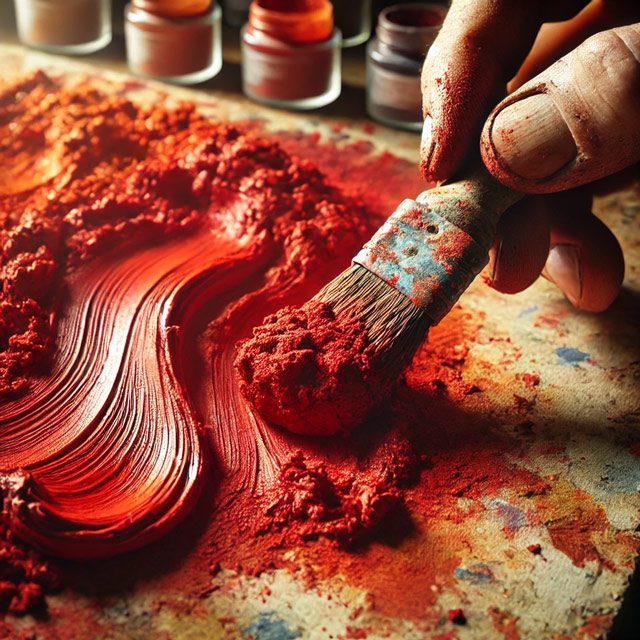
Artists have long relied on color to convey emotion, meaning, and beauty in their work. Yet, the vibrant array of hues we take for granted today wasn’t always available to them. Before the 19th century, many colors were hard to find, expensive to produce, or completely unavailable to artists. Understanding why certain colors were so difficult to come by offers insight into both art history and the science behind pigments. This exploration unveils a world where creativity was often shaped by the colors artists had—or didn’t have—at their disposal.
The Role of Natural Materials in Pigment Creation
For centuries, the creation of artist pigments depended on materials that were naturally available. Artists couldn’t simply order a tube of paint; instead, they had to source pigments from minerals, plants, and even insects. For example, ultramarine, one of the most valued colors in history, was derived from lapis lazuli, a rare semi-precious stone found primarily in Afghanistan. Its scarcity made it more expensive than gold.
Even other colors such as red and yellow were challenging to obtain. Red often came from natural sources like cochineal insects, which had to be crushed to extract the vibrant dye. Yellow pigments were sometimes created using toxic substances like lead, and those who worked with them risked poisoning. The limited range of available natural materials heavily influenced the palette artists had access to, meaning that entire genres of painting were influenced by the scarcity of certain colors.
In this context, it becomes clear that the natural world dictated what colors were available to artists. If an artist lived in a region where particular materials weren’t accessible, they would have been limited to whatever could be sourced locally or traded at great expense. This limitation placed enormous constraints on an artist’s creativity, as their ability to experiment with color was often restricted by geographical or financial barriers.
The Expense of Exotic Pigments
Cost was another crucial factor that limited the availability of certain colors to artists before the 19th century. Pigments like ultramarine and carmine were extremely expensive, and only the wealthiest patrons could afford to commission works that included these shades. Artists often had to mix and blend their own pigments in their workshops, a time-consuming process that also contributed to the high cost of vibrant colors.
The high price of pigments directly influenced what an artist could include in their work. For example, during the Renaissance, ultramarine was often reserved for depicting the robes of the Virgin Mary in religious paintings, a sign of the pigment’s value and significance. Painters who couldn’t afford ultramarine had to find substitutes, like azurite, a cheaper mineral pigment, though it faded over time.
This economic pressure meant that artists often had to be strategic with their use of color. Wealthy patrons expected certain pigments in their commissioned works, and these colors were sometimes seen as status symbols. As a result, the choice of color in many historic artworks wasn’t only a creative decision—it was a financial one, too.
Toxicity and the Risks of Using Certain Colors
Many of the pigments available to artists before the 19th century were not only expensive but also dangerous. Toxicity was a serious concern for artists, as many pigments were made from harmful substances like lead, mercury, and arsenic. For instance, lead white was commonly used in oil painting, but prolonged exposure to it could lead to lead poisoning, affecting both the artists who used it and the people who came into contact with their finished works.
Vermilion, a brilliant red pigment made from mercury, posed similar risks. Despite its beauty, it was highly toxic, and those who worked with it risked serious health issues. These dangers were widely known, but alternatives were often unavailable, forcing artists to make the dangerous trade-off between vibrancy and safety.
Despite the risks, these toxic pigments continued to be used for centuries because they produced colors that were difficult to replicate using safer materials. This reality shaped not only the artistic process but also the lives of the artists themselves, many of whom suffered from chronic health issues due to exposure to toxic pigments.
The Discovery of Synthetic Pigments
Everything changed in the 19th century with the advent of synthetic pigments. The Industrial Revolution brought advances in chemistry that allowed for the creation of artificial colors, which were not only safer to use but also far more affordable. The discovery of Prussian blue in the early 18th century marked the beginning of this revolution, as it provided a vibrant and reliable blue pigment that didn’t rely on expensive natural resources.
Later discoveries, like cadmium yellow and chrome green, offered new options that expanded the palette available to artists. These synthetic pigments were often brighter, more stable, and less toxic than their natural counterparts. For the first time, artists had access to a wide range of colors that didn’t come with exorbitant price tags or health risks.
The availability of synthetic pigments had a profound impact on the art world. No longer constrained by the scarcity of natural materials, artists could experiment with a broader range of colors. Movements like Impressionism and Post-Impressionism, which emphasized bold use of color, were made possible by these advances in pigment technology.
Geography and the Availability of Colors
Geography played a significant role in determining which pigments were available to artists before the 19th century. Different regions had access to different natural resources, which meant that the palette of an artist working in Europe would have been vastly different from one working in Asia or the Americas.
For instance, the vibrant reds and purples that were highly prized in Europe were often sourced from South America, where the cochineal insect was found. This trade was difficult and expensive, which meant that artists who worked far from these regions had to either pay a premium for imported pigments or do without them entirely. Conversely, artists in regions where natural pigments were more abundant could work with a wider variety of colors.
The global trade in pigments was complex and often shaped by political and economic factors. Wars, trade routes, and colonialism all played a role in determining which colors were available in different parts of the world. For example, the introduction of indigo dye to Europe, brought back from India, revolutionized the availability of blue pigments for European artists.
The Influence of Religion and Politics on Color Choices
The colors available to artists before the 19th century were also influenced by religious and political factors. In many cultures, certain colors carried deep symbolic meanings, and the use of those colors in art was often governed by religious or political authorities. In the Catholic Church, for instance, blue was associated with the Virgin Mary, and gold was used to signify divine light. Artists who worked on religious commissions were often required to use specific colors to convey particular meanings, which could limit their creative freedom.
Politics also played a role in the availability of colors. In some cases, certain pigments were controlled by the state or were only available to the elite. For example, during the Middle Ages, the use of purple was restricted to royalty in many parts of Europe. Artists who worked for royal patrons had access to this prestigious color, while those who didn’t were barred from using it.
The symbolic meanings attached to colors often shaped the way they were used in art. While these symbolic meanings varied across cultures and time periods, the power of color to convey meaning has always been a critical aspect of artistic expression.
Technological Advances and the Democratization of Color
By the 19th century, technological advances had transformed the way artists could access and use color. The development of synthetic pigments and the mass production of paints meant that even amateur artists could afford a wide variety of colors. This democratization of color opened up new possibilities for creative expression and allowed more people to engage with art.
Before these advances, the use of color in art had been largely restricted to those who could afford expensive pigments. The cost and scarcity of certain colors had created a hierarchy in the art world, where the use of vibrant, rare pigments was seen as a sign of wealth and status. With the advent of synthetic pigments, that hierarchy began to break down, as more artists from diverse backgrounds were able to experiment with color in their work.
This shift had a profound impact on the art world, as movements like Romanticism, Impressionism, and Fauvism emerged, all of which made bold use of color. The democratization of color also allowed for the rise of new art forms, such as graphic design and photography, which relied on the availability of a broad range of pigments and dyes.
Conclusion: The Revolutionary Impact of Color Availability
The history of color in art is a story of limitation, creativity, and eventual revolution. Before the 19th century, the colors available to artists were dictated by the natural world, geography, and economic factors. Pigments were rare, expensive, and often toxic, meaning that the choice of color was as much a practical decision as a creative one.
However, the 19th century brought about a revolution in the availability of color. Synthetic pigments made it possible for artists to access a wider range of colors than ever before, changing the art world forever. This shift allowed for greater experimentation and creativity, giving rise to new artistic movements and expanding the boundaries of what was possible in art.
As one artist noted, “The moment I could access a full spectrum of colors, my work transformed. Suddenly, the world of possibilities opened up.” This revolution in color availability has continued to shape the art world, making it possible for more artists to explore and experiment with color in their work.




